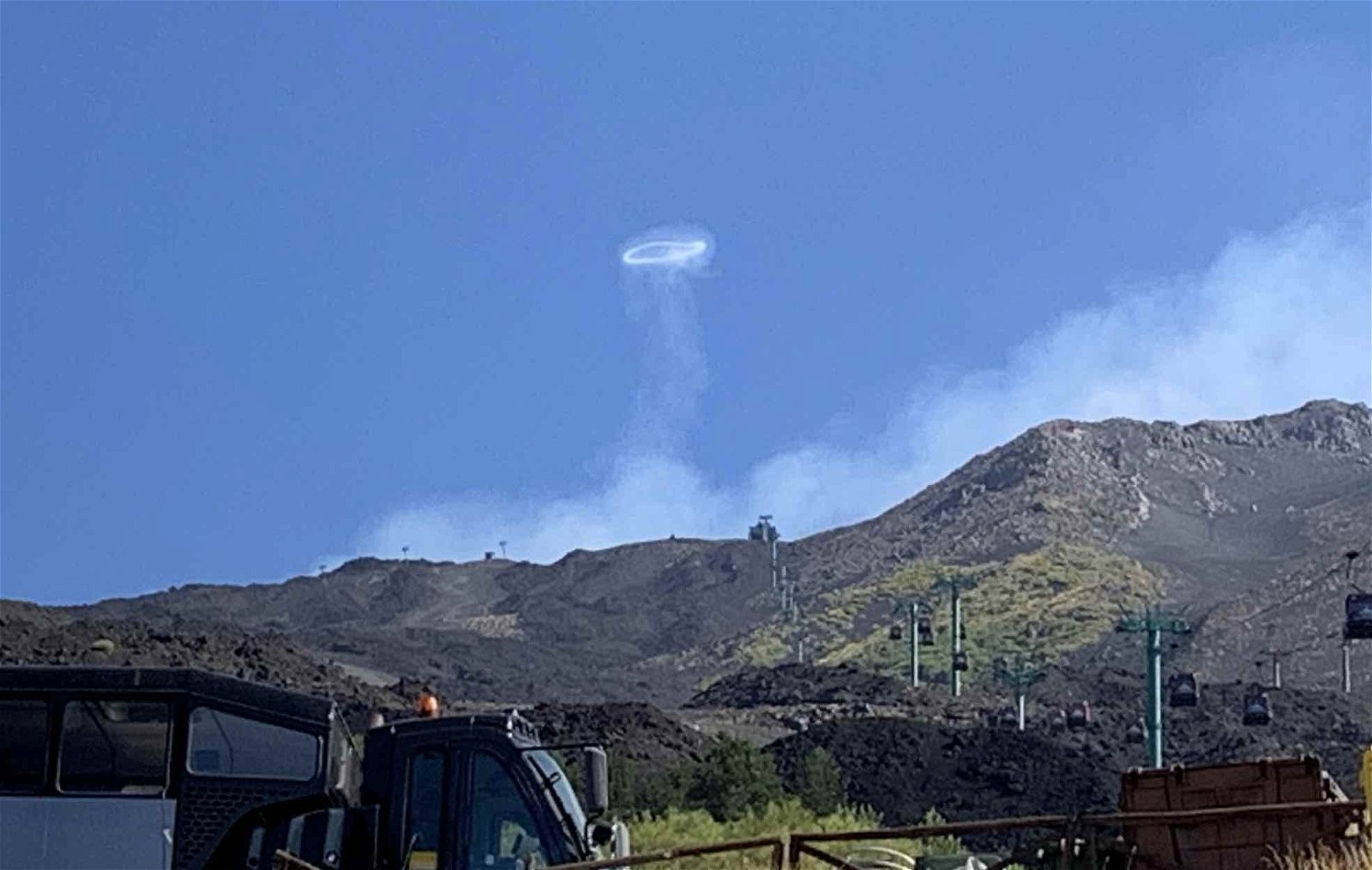A rare spectacle appeared in the sky over Sicily’s Mount Etna recently, as huge smoky vortex rings were spotted rising above the massive volcano.
The largest volcano currently active in Europe, Mount Etna rises to a height of 10,902 feet (3,323 meters), making it both the tallest volcano on the continent, in addition to being the most active.
Visitors to the area recently spotted the volcano producing unusual circles of what appeared to be smoke, known as vortex rings, which are actually the result of condensed gases from deep underground that make their way to the surface. Once they manifest in Etna’s crater, the massive rings can occasionally be seen rising above the volcano.
According to an update from Italy’s National Institute of Geophysics and Volcanology (Istituto Nazionale di Geofisica e Vulcanologia), several dozens of the ring vortexes began to appear from the volcano’s southeastern crater on April 2.
Mount Etna is one of just a few volcanoes that are known to produce such rings, although Etna is renowned both for the number of them it produces, as well as their striking appearance.
The recent show produced by the mountain was the result of a small vent located on the northeastern edge of the volcano’s southeast crater, according to Boris Behncke, a volcanologist and longtime observer of Etna’s impressive rings through his work with Italy’s National Institute of Geophysics and Volcanology of Catania.
#Etna is putting on a new, different show. Since the evening of 2 April 2024, a small vent on the Southeast Crater is emetting unprecedented quantities of gas rings (volcanic vortex rings). Timelapse (10x) video recorded at dawn on 4 April 2024 from home in Tremestieri Etneo pic.twitter.com/4VjxNJYxKP
— Boris Behncke (@etnaboris) April 4, 2024
Since early April, Etna has continued to produce several hundreds of the smoky rings, giving rise to the volcano being dubbed the “Lady of the Rings.”
Fortunately, the recent eruptions aren’t an indication of an imminent eruption. The volcano has remained active for the last 500,000 years, with the last major eruption occurring last May. Another major eruption in 1983 prompted officials to set of dynamite in an attempt to prevent the flow of lava from the volcano, which continued to remain active for months afterward.
Ash produced by volcanic eruptions from Etna have caused temporary disruption to air traffic and other transportation systems in the past.
To learn more about vortex rings produced by Mount Etna, you can visit Volcano Discovery’s Etna eruption update page, and additional imagery of vortex rings can be found here.
Micah Hanks is the Editor-in-Chief and Co-Founder of The Debrief. He can be reached by email at micah@thedebrief.org. Follow his work at micahhanks.com and on X: @MicahHanks.

